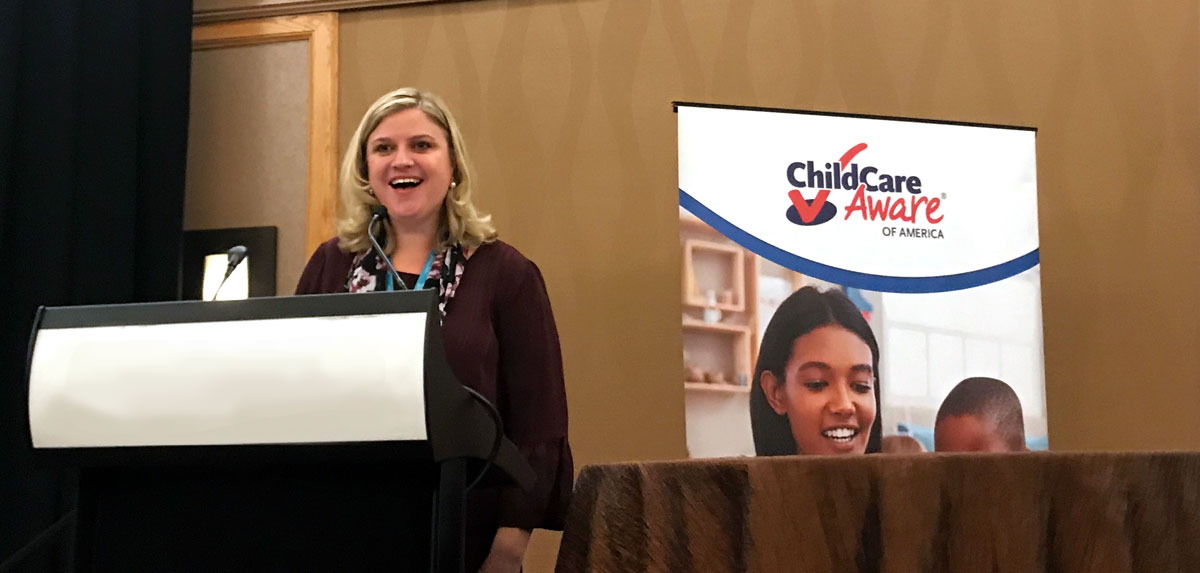Editor’s Note: This is the first installment in a series on CCR&Rs that is meant to be shared with policy makers, government administrators and other new and prospective investors who may not understand the opportunities CCR&Rs offer when addressing America’s child care challenges. Please leave us your insights and feedback in the comments below. We will take your feedback, and then turn these blog posts into an e-book that you can then use as a tool to describe the nature, capabilities and benefits of the CCR&R system.
Today, more than 11 million children from under 5 years old are in some form of child care in the United States. These numbers, along with growing research about the economic and social impact of child care’s positive outcomes on early childhood experiences, have spurred a growing urgency to improve the child care options available for working families throughout the country.
As policymakers, government administrators, and investors work to identify solutions to America’s child care needs, they must not overlook the current Child Care Resource and Referral (CCR&R) system as a starting point. Serving nearly every community in the nation, CCR&Rs offer a nationwide infrastructure to achieve a bold new vision for child care. Located in 47 states, CCR&Rs are a vital resource for families, child care professionals and communities—pressing for stronger child care licensing regulations, higher investments in child care systems, subsidies and greater recognition of the importance of high-quality child care for all children.
In 2018, CCAoA launched the Ignite Initiative, a multi-faceted, strategic, national study of CCR&Rs in the United States. The purpose of the study was to provide an accurate and up-to-date picture of the state and local CCR&R landscape throughout the country.
The results of the 2018 study, coupled with contextual background, present timely opportunities for decision makers to understand and capitalize on the nationwide CCR&R infrastructure.
CCR&R History: A National Grassroots Movement
The origin of the CCR&R system stemmed from a growing demand in the 1960s and 1970s for working parents to find safe and reliable child care, caused by a massive influx of women entering the workforce. These social and political forces prompted the formalization of a nationwide CCR&R system that addressed three foundational needs:
- Families’ need to access consumer education and child care referrals;
- Communities’ need to build supply and improve the quality of child care; and
- Employers’ need for a child care system that would support a productive workforce
From their inception, effective CCR&R services were based on building and sustaining high-quality, affordable child care by supporting an integrated three-fold focus on a defined set of core services for families, child care professionals, and communities in different, yet holistic and complimentary ways.
CCR&Rs established themselves early as the premier source of comprehensive child care data. CCR&Rs needed information about child care facilities in order to appropriately match families with programs that met their unique needs. At the same time, CCR&Rs became proficient in documenting trends in demand for child care articulated first-hand by families they served. Once armed with an accurate and up-to-date picture of supply, demand, cost, and quality, CCR&Rs used data to inform their own strategies, strategies of community and business stakeholders, and to advocate for policies that supported access to quality, affordable child care.
In 1993, CCAoA studied the status of CCR&Rs, which represented a field poised to serve as a nationwide infrastructure to respond to child care market failure. In 2000, a similar CCAoA study reflected a maturing CCR&R system bolstered by increased federal investment from the Child Care and Development Block Grant (CCDBG) and by research-based evidence about early brain development and the lasting impacts of high-quality child care on children. Up until that time, local CCR&Rs across the nation were uniformly expected to provide a comprehensive set of defined services to families, child care providers and communities.
Throughout the 2010s, policy makers and philanthropists intensified their focus on enhancing child care quality. This more intensive focus on the child care professional was reinforced by the birth of Quality Rating and Improvement Systems (QRIS) and their focused funding streams directed at creating systems to improve quality outcomes for children. With the influx of new resources and accountability measures, states began to re-envision their child care systems, often building on their existing strong CCR&R systems. However, some states created separate infrastructures for their QRIS or quality initiatives, which ultimately undermined the strength and effectiveness of their CCR&R systems.
How have National & State Early Childhood Policies Evolved?
America’s first CCR&Rs gained recognition as a vital consumer education and referral resource through the Title XX legislation in the 1970s, the Dependent Care Planning Grant of 1987, and the Family Support Act of 1988. The passage of the federal Child Care and Development Block Grant (CCDBG) of 1990 represented the most significant government investment in child care financial assistance for families with low incomes and related child care services that would align directly with the CCR&R delivery system. The recognition that CCR&R continue to be the critical foundation of the evolving local, state and national infrastructure was reinforced in both the 1996 and the 2014 federal CCDBG reauthorization bills.
The passage of the Child Care and Development Block Grant of Law of 2014 represented the most significant bi-partisan effort to address America’s child care needs in history. For CCR&Rs, this was a monumental achievement for the nation. For nearly 30 years following the initial passage of CCDBG in the 1990, CCR&Rs served their communities, collected data and beat the drum for an even more robust national child care system that would address the evolving needs of families and incorporate common sense and evidence-based requirements for all states. Implementing this new vision for child care would not be easy; however, the 2014 CCDBG Law provided a roadmap for states that prominently called out CCR&Rs for their unique ability to support States, including but not limited to:
- Helping families make informed child care choices;
- Connecting families to resources to pay for child care and other services;
- Increasing the supply and quality of care;
- Collecting and disseminating child care data; and
- Establishing and coordinating public/private partnerships
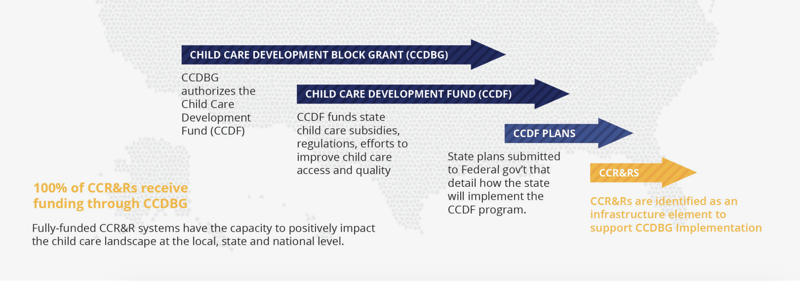
Multiple new opportunities for states to leverage CCR&Rs exist in CCDBG implementation. CCR&Rs are poised to contribute to disaster preparedness and response, consumer education and family engagement, use of supply and demand data and more.
How do CCR&Rs Help Families?
CCR&Rs help take the guesswork out of choosing child care. Trained CCR&R staff provide guidance by phone, in person and online—all tailored to meet the unique needs of each individual family. They provide families with information about child care options, licensing requirements and how to use the state’s Quality Rating and Improvement System (QRIS). CCR&Rs also help families access financial support for child care, including information about Child Care and Development Fund (CCDF) vouchers, Head Start, public preschool assistance programs, and tax credits. CCR&Rs can also play a valuable role connecting families to other public resources like health insurance, heating assistance and food assistance.

How do CCR&R Build the Supply of Child Care?
CCR&Rs provide an entry point to child care. They recruit and help potential child care professionals learn about licensing requirements, health and safety regulations, child development and effective business practices. CCR&Rs also work with the public and the private sector to combine resources to build and maintain the supply of quality care, targeting areas with the greatest shortages, such as infant/toddler care, nonstandard hour care and care for children with special needs.
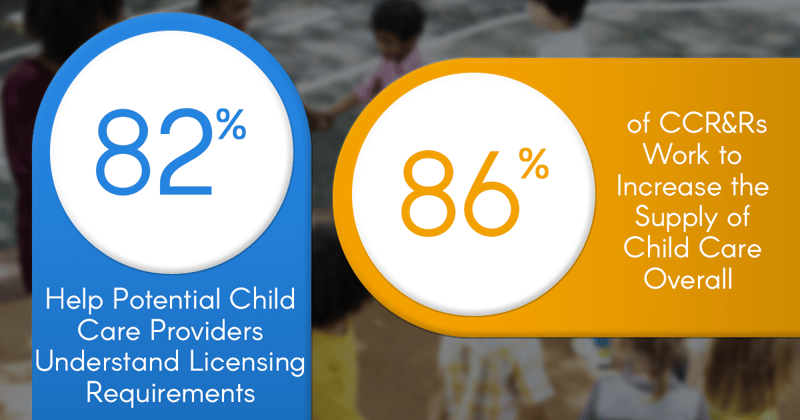
How do CCR&Rs Improve the Quality of Child Care?
CCR&Rs provide training opportunities to child care administrators and staff – both to meet licensing requirements and to achieve the highest levels of quality. CCR&Rs deliver technical assistance to help professionals implement new skills and knowledge acquired though trainings. In many states, CCR&Rs are the foundation of quality improvement support for child care professionals, offering mentorship and coaching to child care programs participating in Quality Rating and Improvement Systems (QRIS).

How do CCR&Rs Illustrate Child Care Needs and Trends?
CCR&Rs are the nation’s primary source of data about child care. They use their comprehensive databases to track and monitor trends, and to use data to make informed decisions about where and how to invest resources. CCR&Rs are best positioned to identify underserved populations and to pinpoint the most significant gaps in child care supply and demand. CCR&Rs are the primary source of data to fuel important national child care reports, including CCAoA’s State Child Care Fact Sheets, Mapping the Gap and Parents and the High Cost of Child Care.
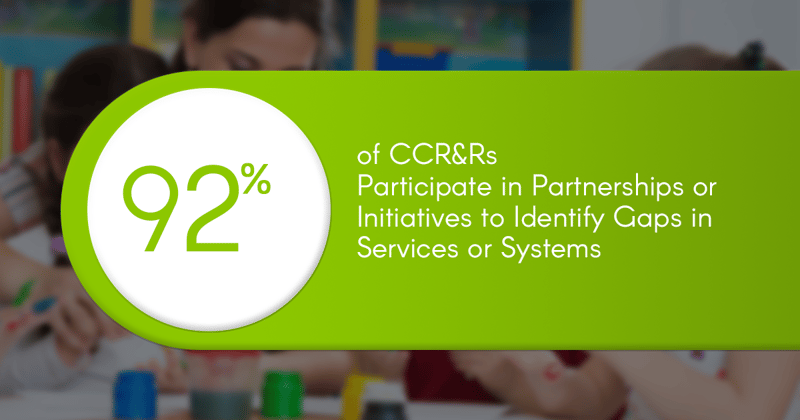
How do CCR&Rs Move the Needle on Public Policy & Investment?
CCR&Rs partner with business leaders, health care professionals, school teachers and others to elevate child care as a primary concern for the entire community. CCR&Rs collaborate with others to promote a vision of child care that nurtures the whole child and includes a focus on physical and mental health, literacy, socio-emotional growth, special needs and offers a culturally appropriate and enriching environment. CCR&Rs bring the voices of children, families and child care professionals to the attention of the public and policymakers by providing resources, data and innovative new ways to meet those needs. Many CCR&Rs have helped families, providers, and community members joined Child Care Works, a grassroots movement powered by CCAoA to engage advocates in support of high quality, accessible, affordable child care for all children.
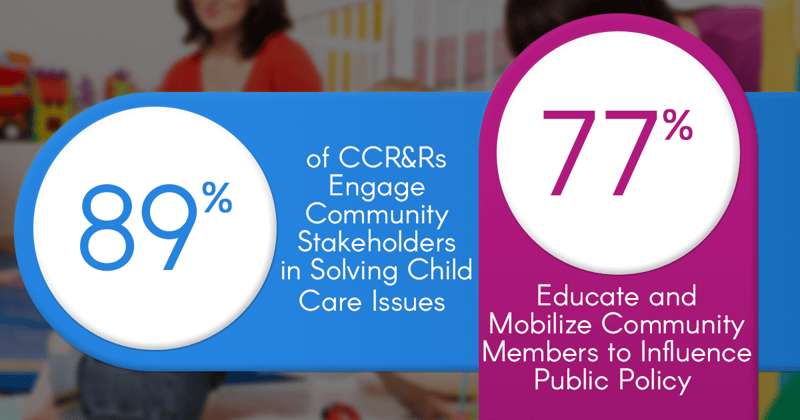
How are CCR&Rs Supported at the State Level?
In 39 states, CCR&R’s are supported by nonprofit organizations known as state CCR&R networks. State CCR&R networks provide coordination and leadership for the state’s CCR&R system and improve the quality and consistency of services for parents, providers and communities. Those state CCR&R networks that are funded by their state are best positioned to effectively collaborate and innovate with government officials, the private sector and community stakeholders to envision and support a quality child care system.

What is the Benefit of a Nationwide CCR&R System?
Together, CCAoA and the nationwide network of state and local CCR&Rs are uniquely positioned to increase the effectiveness by which States invest new Child Care and Development Block Grant (CCDBG) funds in 2018 and beyond. The nationwide CCR&R infrastructure offers the following benefits to policy makers, government administrators and investors:
- A local, state and community network with links to all players in the early childhood system;
- Access real-time information and insights about CCDBG focus areas, like child care supply and demand, recruitment and retention, professional development, Quality Rating and Improvement Systems (QRIS), consumer education and disaster preparedness;
- Access to CCAoA’s research initiatives, fueled by CCR&R contributions, providing quick access to national, state, and local data;
- Access to innovative approaches to service delivery generated by community-based needs; and
- Access to near-immediate access to parent and child care provider voices from every corner of the country — true stories documenting real life impacts of policies and funding
We hope this provided a high-level overview of the nationwide CCR&R system —their grassroots beginnings, their role in state and federal policy, and their local, state, and national touch points. Please stay tuned for our next post in this series which will highlight the role of state CCR&R networks.
Again, please leave your feedback on this overview in the comments below. Your insights will be considered as we work to create an e-book that covers all installments in this series that will launch in early 2019.




